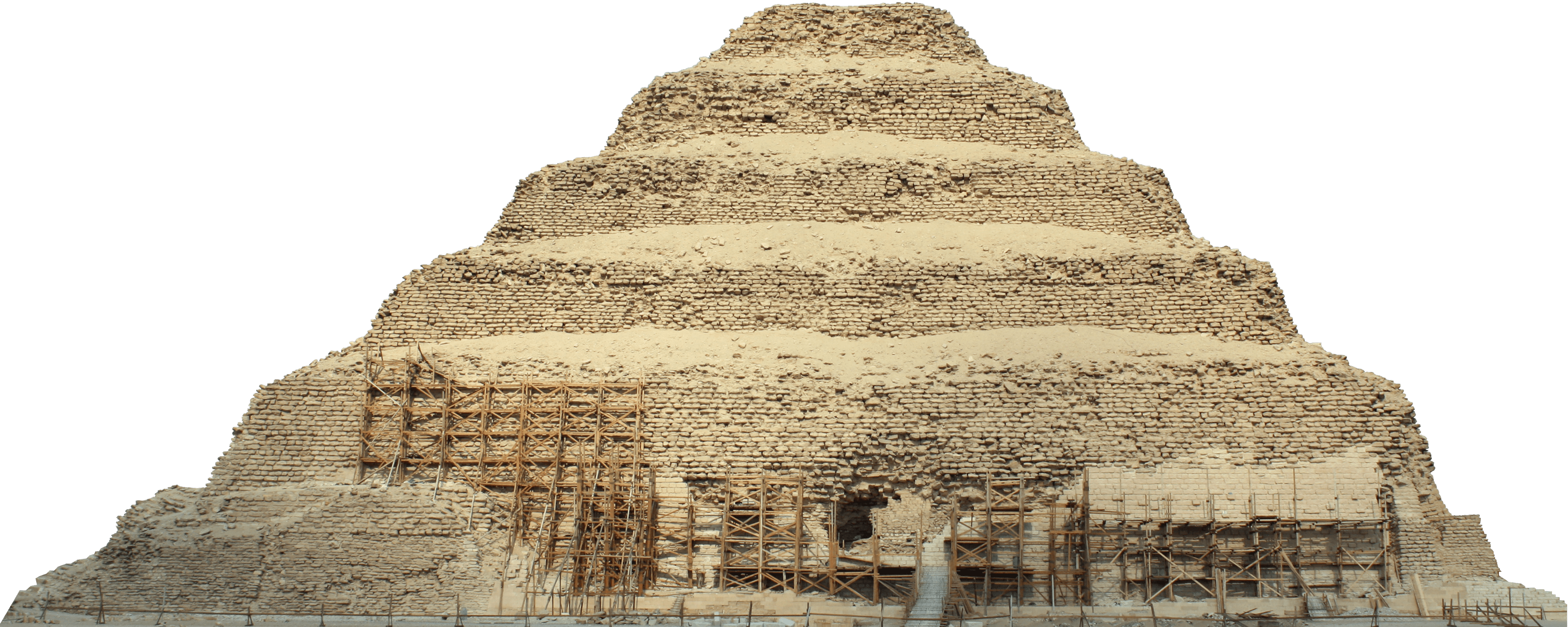

The Pyramid of Djoser isn't really a pyramid. Constructed over the course of 19 years beginning in 2667 BCE, the Pyramid was built for the reigning Egyptian pharaoh Djoser. Djoser ruled during Egypt’s Old Kingdom, a grand period of architectural innovation that culminated in the famous Giza Pyramids, the Great Sphinx, and much of the ancient Egyptian culture that intrigues and mystifies us to this day. So if the Pyramid of Djoser isn't a pyramid, what is it?
Before the invention of the pyramid, powerful Egyptians were buried in mastabas, rectangular tombs shaped like large stone shoe boxes. Enter the priest-scholar Imhotep: architect, engineer, physician, the high-priest of the sun god Ra, and Djoser’s right hand man. Imhotep was an ancient Da Vinci, whose work broke new ground in the studies of anatomy, philosophy, and poetry. But his most famous innovation was a simple twist on the common mastaba tombs of the era. When asked to draft a grand burial site for Djoser, Imhotep designed the largest building of his time, a tower built from six mastabas stacked on top of each other—a ladder to the sky.
Imhotep’s simple innovation earned him a cult of Egyptian worshipers that lasted 1400 years, and his proto-pyramid is still with us almost 5000 years later. Now called The Step Pyramid, it represents the first step toward the world’s most long-lasting architectural structure.